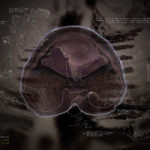The Plantation Boy
2012 - Photography (Photography)
34 x 59 cm each
Uche Okpa-Iroha
In the fictional narrative Plantation Boy (2012), Irhoa places himself inside imagery from Francis Ford Coppola’s seminal The Godfather (1972). Inflected with humor, the series examines race in society. According to the artist, the 40 images collectively question structures of power and the hegemony of Western culture. This détournement of a cult film demonstrates the extent to which our collective imaginary is manipulated by image and representation. This specific piece marks a major conceptual pivot within the artist’s oeuvre, in terms of both composition and performative character. The work reveals that which was once hidden from view— inequalities of the past and the present. This allows the artist to question representative stereotypes of identity, placing them at the heart of the image. This symbolic presence gives way to a form of recognition. The magical quality of the photographic medium provides the means to confront both history and fiction through reconstruction and re-appropriation.
Uche Okpa Iroha documents the living conditions of those on the margins of society. Beginning his career as a photojournalist in 2005, his striking, double exposed and black and white images depict moving bodies overlaid with natural light, producing images with great depth. He creates atmospheric shots in which questions of body representation become a political paradigm for reading the image. If the omnipresent flux of images in our daily lives reinvents, influences and modifies our self perception as well as our perception of others, then Uche Okpa Irhoa re-appropriates such given identities as a means of critiquing the oversaturation of unnuanced images. He also uses the photographic medium as a means of proposing new performative or choreographed narratives. His work sits at the intersection between fiction and sociology, seeking to deconstruct often truncated visual references perpetuated by the media. He is the director of the experimental Njele Art Station in Harare Zimbabwe and is co-founder of the Invisible Borders collective.
Colors:
Related works sharing similar palette
» see more

© » ARTS EQUATOR
Migrant Ecologies Project: A Grain of Wheat Inside a Salt Water Crocodile | ArtsEquator Thinking and Talking about Arts and Culture in Southeast Asia Grain of Wheat July 8, 2019 Wheat Grain World Dreams , the centre section from the artist’s book contains a map that includes some of our research questions around, for example, histories of 19th century cash crops and the crimes of the British India Company; and the extension of China’s Belt and Road journey West...

© » KADIST
Rometti Costales
2013The three cut-outs are made of three aerial photographs coming from the archives of the Ecuadorian Military Geographic Institute...

© » KADIST
Julius Koller
1978This work is one of Koller’s many variations which he began to use from 1970 to describe the ‘cultural situations’ he created...
Related works found in the same semantic group
» see more

© » KADIST
William E. Jones
2000His series, The Golden State, harkens back to his early career and his photographic training...

© » KADIST
Xiaoyun Chen
2006The image of rusted nails, nuts and bolts as shrapnel sandwiched between a fried Chicken burger highlights the contrast between decadence and destruction...

© » KADIST
Robert Therrien
1985In No Title (Blue Chapel) Therrien has reduced the image of a chapel to a polygon...


